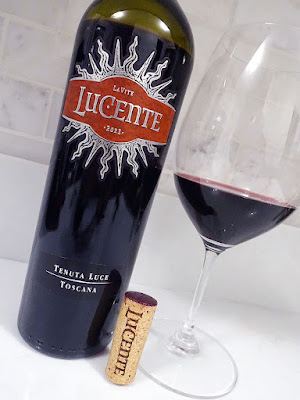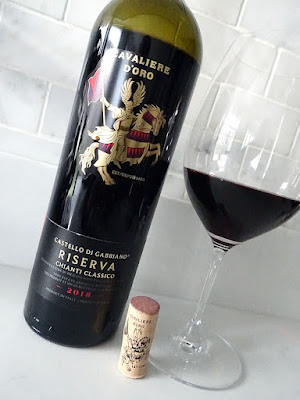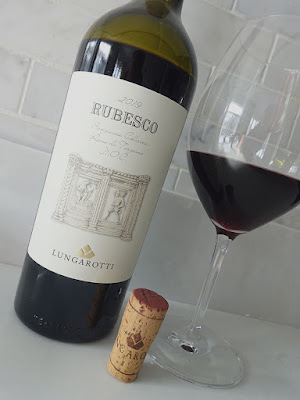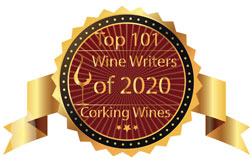red wine review is a lovely Riserva Chianti Classico from Tuscany. A relatively frequent visitor to Ontario, this latest vintage arrived at the LCBO on Saturday as part of the LCBO VINTAGES New Release Collection.
It is produced by San Felice, an estate whose origins date back to Etruscan times, but whose modern winemaking activities go back to the 1960s after it was acquired and developed into the iconic winery (and resort) it is today. Findings unearthed on the estate show that the Etruscans shaped the territorial landscape of the Chianti landscape, including the introduction of the cultivation of vines. The Borgo of San Felice, as it's known today, was established in the Middle Ages, with its first mention dating back to the year 714, when it was originally known as San Felice in Avana.
Today, San Felice is an emblem of authentic Tuscany with vineyards in the region's three-most prestigious winemaking territories - 150 hectares in Chianti Classico, 23 hectares in Montalcino, and 15 hectares in Bolgheri, and producing wine from only estate-owned grapes.
San Felice Estate and its historic Borgo Cellars are situated in Castelnuovo Berardenga, in the south of Chianti Classico, just minutes north of Siena. With deep respect for its historic estate, the philosophy at San Felice starts with sustainability. The estate covers 150 hectares at approximately 400 metres above sea level, and features an ideal combination of soil and microclimate to produce highly acclaimed wines and oils. The winemaker at San Felice, Leonardo Bellaccini, has pioneered many unique practices at the estate, including identifying the distinctive characteristics in each of San Felice's undulating slopes and treating each vine within the vineyard individually. Leonardo has also identified five macro-areas, allowing San Felice to plant the appropriate grape varieties in a specific geography and soil type, which allows the grapes to thrive and express the terroir. The 18th century cellar of San Felice is carved out of rugged limestone and is where tradition is combined with advanced technology. The cellar contains rows of oak barrels, as well as halls of steel tanks, where wines undergo temperature-controlled fermentation and ageing.
This red wine is crafted with 100% Sangiovese that was grown at the San Felice Estate in Castelnuovo Berardenga, Siena, in the south of Chianti Classico. The vines were trained using the spur-pruned cordon system and grown on medium-textured, predominantly calcareous marl consisting of Alberese and Galestro limestones, with abundant gravel-pebble mixture. After harvesting the grapes in the second week of September and the first week of October, they were vinified by fermentation on the skins at 28–30° C for 18–20 days, followed by malolactic fermentation in steel. It was matured in oak for 24 months, with 80% of the wine being aged in 60/90 hl Slavonian oak casks, and the remaining 20% aged in 225 L French barriques, followed by further ageing in bottle for approximately 6 months.
It is difficult to generalize the vintage growing conditions in Chianti Classico because each UGA tends to have its own geographical uniqueness. Overall, however, the 2021 vintage featured a hot summer with a later harvest that yielded vibrant and focused red grapes with ripe tannins, albeit with slightly reduced yields at lower elevations. At the estate in Castelnuovo Berardenga, the 2021 growing season had a regular seasonal pattern with spring rains favouring vegetative growth and ensuring water reserves for the summer. While bud growth was slightly delayed due to cooler temperatures after the beginning of April, there was no negative impact on plant health. The summer was dry, with moderate temperatures and no excessive heatwaves, and also featured occasional sporadic rains. Plant stress was prevented because of water reserves that accumulated during spring. From late-August, nighttime temperatures dropped significantly and helped aid ripening. From an excellent vintage that produced healthy and high-quality grapes, let's see how this 2021 Riserva Chianti Classico from Tuscany is tasting tonight...
This Sangiovese has a medium+ to medium-high intensity nose with a slightly reductive character that yields to a lovely, complex mix of dark red cherry, floral, clove, and sweet wood spice aromas in a slightly dried cherry/floral profile. On the dry, medium+ to medium-full bodied palate it has lovely dark red cherry, wood spice, cocoa, clove, cinnamon, and sweet spice flavours nuanced with dried cherry, floral, and orange peel notes. It has crisp, juicy acidity, along with creamy, well-structured, and slightly youthful tannins. Savoury spice, cocoa, and earthy notes with touches of dried herb notes lingering on the long, crisp, and juicy finish. Decant and enjoy this recommended buy, or hold at least 5+ years for a more mature expression. Score: 91 pts
While their Chianti Classico Annata is readily available at the LCBO, other wines by San Felice can be ordered through their Agent - Noble Estates Wines & Spirits.
It is produced by San Felice, an estate whose origins date back to Etruscan times, but whose modern winemaking activities go back to the 1960s after it was acquired and developed into the iconic winery (and resort) it is today. Findings unearthed on the estate show that the Etruscans shaped the territorial landscape of the Chianti landscape, including the introduction of the cultivation of vines. The Borgo of San Felice, as it's known today, was established in the Middle Ages, with its first mention dating back to the year 714, when it was originally known as San Felice in Avana.
Today, San Felice is an emblem of authentic Tuscany with vineyards in the region's three-most prestigious winemaking territories - 150 hectares in Chianti Classico, 23 hectares in Montalcino, and 15 hectares in Bolgheri, and producing wine from only estate-owned grapes.
San Felice Estate and its historic Borgo Cellars are situated in Castelnuovo Berardenga, in the south of Chianti Classico, just minutes north of Siena. With deep respect for its historic estate, the philosophy at San Felice starts with sustainability. The estate covers 150 hectares at approximately 400 metres above sea level, and features an ideal combination of soil and microclimate to produce highly acclaimed wines and oils. The winemaker at San Felice, Leonardo Bellaccini, has pioneered many unique practices at the estate, including identifying the distinctive characteristics in each of San Felice's undulating slopes and treating each vine within the vineyard individually. Leonardo has also identified five macro-areas, allowing San Felice to plant the appropriate grape varieties in a specific geography and soil type, which allows the grapes to thrive and express the terroir. The 18th century cellar of San Felice is carved out of rugged limestone and is where tradition is combined with advanced technology. The cellar contains rows of oak barrels, as well as halls of steel tanks, where wines undergo temperature-controlled fermentation and ageing.
This red wine is crafted with 100% Sangiovese that was grown at the San Felice Estate in Castelnuovo Berardenga, Siena, in the south of Chianti Classico. The vines were trained using the spur-pruned cordon system and grown on medium-textured, predominantly calcareous marl consisting of Alberese and Galestro limestones, with abundant gravel-pebble mixture. After harvesting the grapes in the second week of September and the first week of October, they were vinified by fermentation on the skins at 28–30° C for 18–20 days, followed by malolactic fermentation in steel. It was matured in oak for 24 months, with 80% of the wine being aged in 60/90 hl Slavonian oak casks, and the remaining 20% aged in 225 L French barriques, followed by further ageing in bottle for approximately 6 months.
It is difficult to generalize the vintage growing conditions in Chianti Classico because each UGA tends to have its own geographical uniqueness. Overall, however, the 2021 vintage featured a hot summer with a later harvest that yielded vibrant and focused red grapes with ripe tannins, albeit with slightly reduced yields at lower elevations. At the estate in Castelnuovo Berardenga, the 2021 growing season had a regular seasonal pattern with spring rains favouring vegetative growth and ensuring water reserves for the summer. While bud growth was slightly delayed due to cooler temperatures after the beginning of April, there was no negative impact on plant health. The summer was dry, with moderate temperatures and no excessive heatwaves, and also featured occasional sporadic rains. Plant stress was prevented because of water reserves that accumulated during spring. From late-August, nighttime temperatures dropped significantly and helped aid ripening. From an excellent vintage that produced healthy and high-quality grapes, let's see how this 2021 Riserva Chianti Classico from Tuscany is tasting tonight...
Tasting Note:
SAN FELICE IL GRIGIO RISERVA CHIANTI CLASSICO 2021 - Sustainable, DOCG, Tuscany, Italy (#716266) (XD) - $29.95This Sangiovese has a medium+ to medium-high intensity nose with a slightly reductive character that yields to a lovely, complex mix of dark red cherry, floral, clove, and sweet wood spice aromas in a slightly dried cherry/floral profile. On the dry, medium+ to medium-full bodied palate it has lovely dark red cherry, wood spice, cocoa, clove, cinnamon, and sweet spice flavours nuanced with dried cherry, floral, and orange peel notes. It has crisp, juicy acidity, along with creamy, well-structured, and slightly youthful tannins. Savoury spice, cocoa, and earthy notes with touches of dried herb notes lingering on the long, crisp, and juicy finish. Decant and enjoy this recommended buy, or hold at least 5+ years for a more mature expression. Score: 91 pts
While their Chianti Classico Annata is readily available at the LCBO, other wines by San Felice can be ordered through their Agent - Noble Estates Wines & Spirits.























